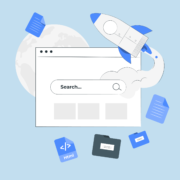The Main Security Threats in Cloud Computing and How to Mitigate Them
Cloud-based platforms have taken the world by storm and are now the standard across the business world. Cloud computing offers a lot of benefits to both business owners and customers alike. After all, the convenience, ease-of-use, and third-party support associated with cloud platforms are too good to ignore. Almost all modern businesses have at least a part of their operational infrastructure outsourced to a cloud platform.
However, this seemingly rapid transition from legacy platforms to managed cloud services is not without its downsides. Even though cloud computing is generally quite secure, there are still some threats that business owners should be aware of. If you plan on switching over to a cloud service, make sure you know the associated risks. Depending on the nature of your business, you might have to implement lots of new processes and procedures to ensure all your data is safe.
In this article, we will talk about the most common security threats related to cloud computing. We will explore each of them in detail and provide you with some practical advice on how to minimize or mitigate the associated risk.
What Are the Main Security Threats in Cloud Computing?
With the rise of cloud-based technologies, hackers and other malicious actors have found lots of ways to exploit them. It is up to both the cloud platform providers and the business owners to take the proper steps to protect their data. Here are some of the most common security threats when it comes to cloud-based software.
DDoS Attacks
Hacker attacks nowadays are more frequent and bold than ever before. One of the main reasons why businesses transition to cloud services is for the added layer of protection they offer. However, cloud platforms are not immune to hackers as well — especially to the relatively new and extremely effective DDoS attacks.
A Distributed Denial-of-Service (DDoS) attack aims to shut a server down by overloading it with fake traffic. Since servers are designed to try and process every request, they are soon overwhelmed by the DDoS activity. As a result, actual requests from real users cannot be processed and the server (and associated service) shuts down. Modern DDoS attacks use complex networks of hijacked devices (known as botnets) to generate terabytes of fake traffic.
While there is no sure-fire way to protect yourself from a DDoS attack on your cloud service, there are certain things you can do to minimize their impact. One good strategy is to utilize dynamic security tools that scan your cloud-based platforms and detect any suspicious activity. Also, make sure the cloud platform you are using has implemented anti-DDoS practices and software.
Data Breaches & Theft
Another hacker threat you should be aware of is data breaches and data theft. Businesses store lots of important data, including personal details, sensitive information, and more. Once this information gets on the cloud, it technically gets stored at a different place — one that can be vulnerable to hackers who want to steal data. A data breach can have devastating consequences for your business, so you should not take this threat lightly.
The main reason for data theft does not have to do with cloud technology, but with human mistakes. No matter the size and scope of your organization, your employees need to be trained in proper data security and encryption methods. It is a good idea to look into the best cloud computing certifications on the market and have your IT professionals acquire them. With a team that is well-versed in cloud security, you will minimize the risk of data breaches and theft across the board.
Vulnerabilities in APIs
When it comes to the integration, monitoring, and management of cloud services, APIs are essential for most software out there. APIs themselves have come a long way in terms of functionality and ease of use. However, this has inevitably led to more and more related security risks. Even state-of-the-art APIs might cause your system to become vulnerable to hackers. With this in mind, you need to have a trained team of IT professionals and security experts that can mitigate the problem.
Misconfigurations
Many business owners think that by moving over to a cloud-based platform, all maintenance and configuration is left to the provider. Unfortunately, this is not the case. Perhaps the most common problems with cloud computing stem from misconfigurations on the client side. As a result, your platform might become compromised and suffer from reduced performance and even data breaches. Also, you will probably not be able to use it to its full potential, thus making your investment go to waste.
In order to avoid such situations, you need to carefully configure each cloud platform you are using before implementing it in your organization. We recommend using the services of a certified cloud engineer. They will be able to set up the proper infrastructure, permission levels, and data protection policies.
Account Hijacking
One of the most serious threats related to cloud platforms is account hijacking. We already discussed that businesses store a lot of essential information on the cloud and any leaks might be disastrous. However, hackers are known for stealing account information and gaining access to a company’s cloud platform. This can result in falsified information, data theft, and other significant issues for a company. With privacy and data protection laws becoming more strict across the world, account hijacking can place your business in significant legal jeopardy.
To ensure this never happens, it is important to work with a cloud platform that utilizes best practices in security. For example, multi-factor authentication, security logs, and real-time monitoring can work wonders against hackers looking to break into accounts. On your side, make sure your staff takes all necessary measures to secure their accounts. These include setting up secure passwords, keeping their credentials safe, and using anti-spy software.
















